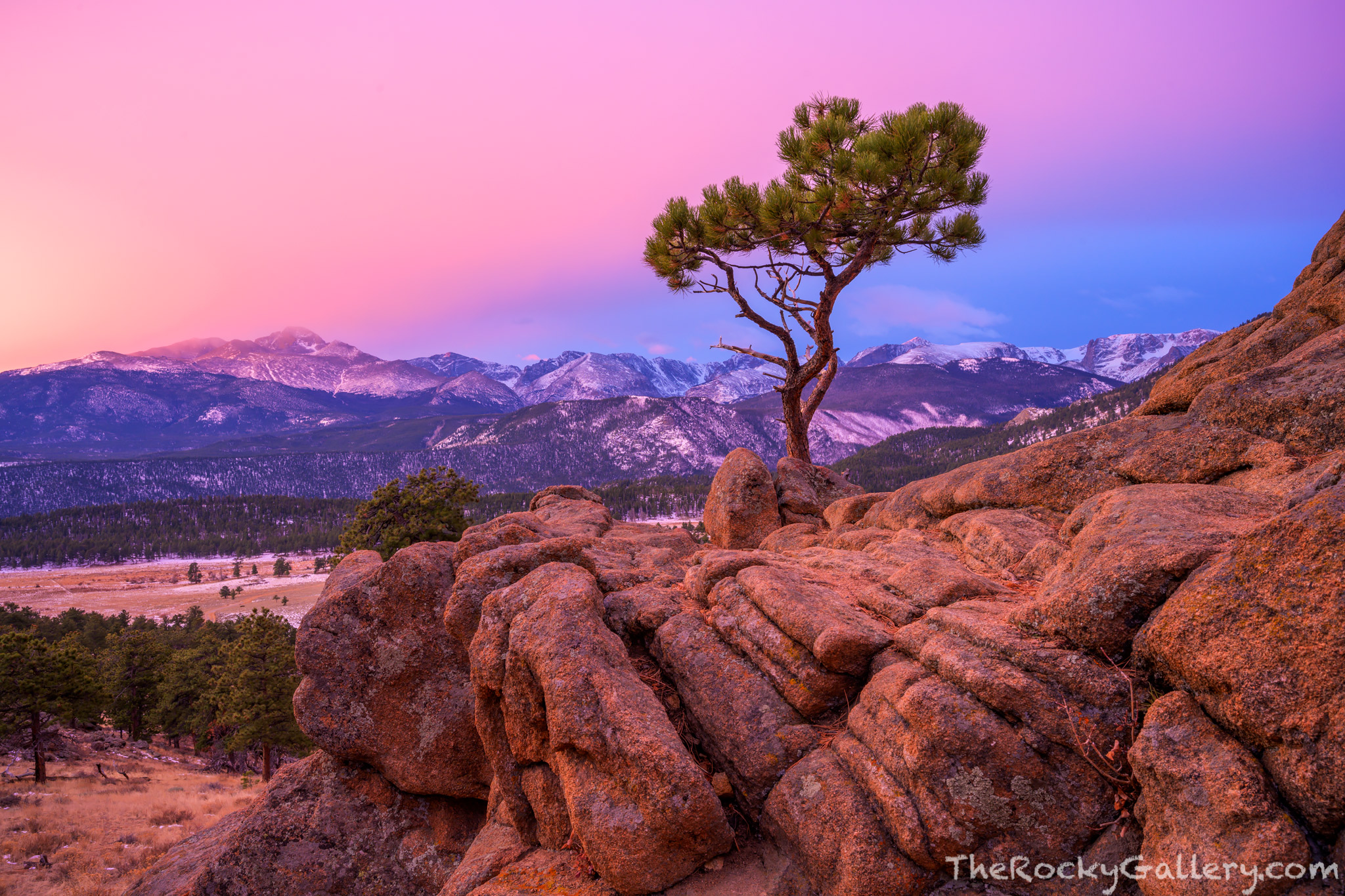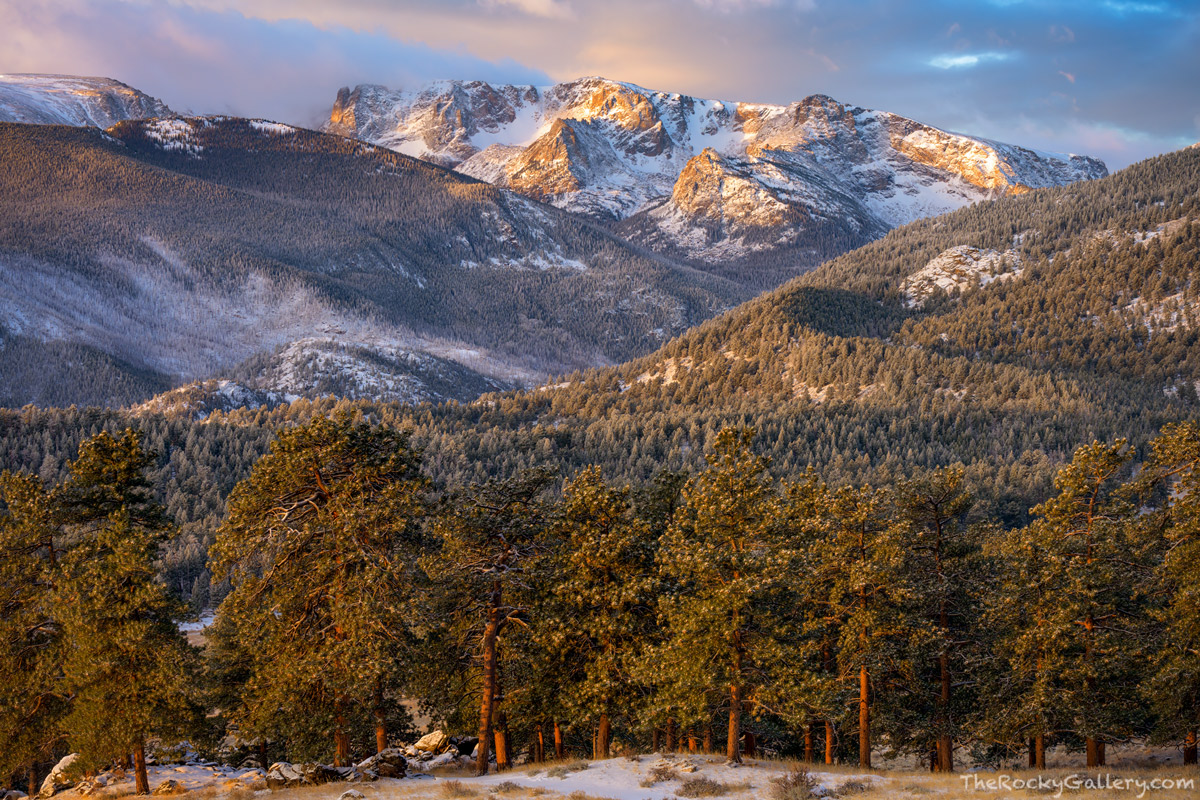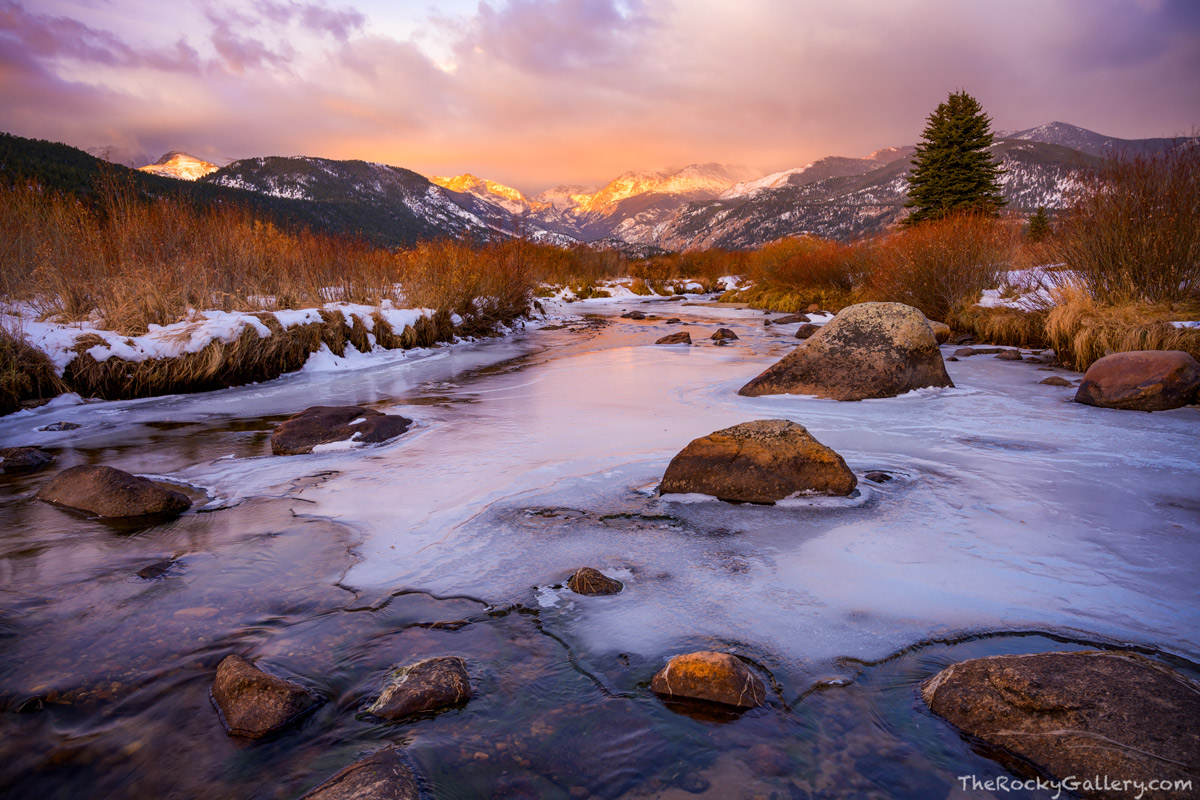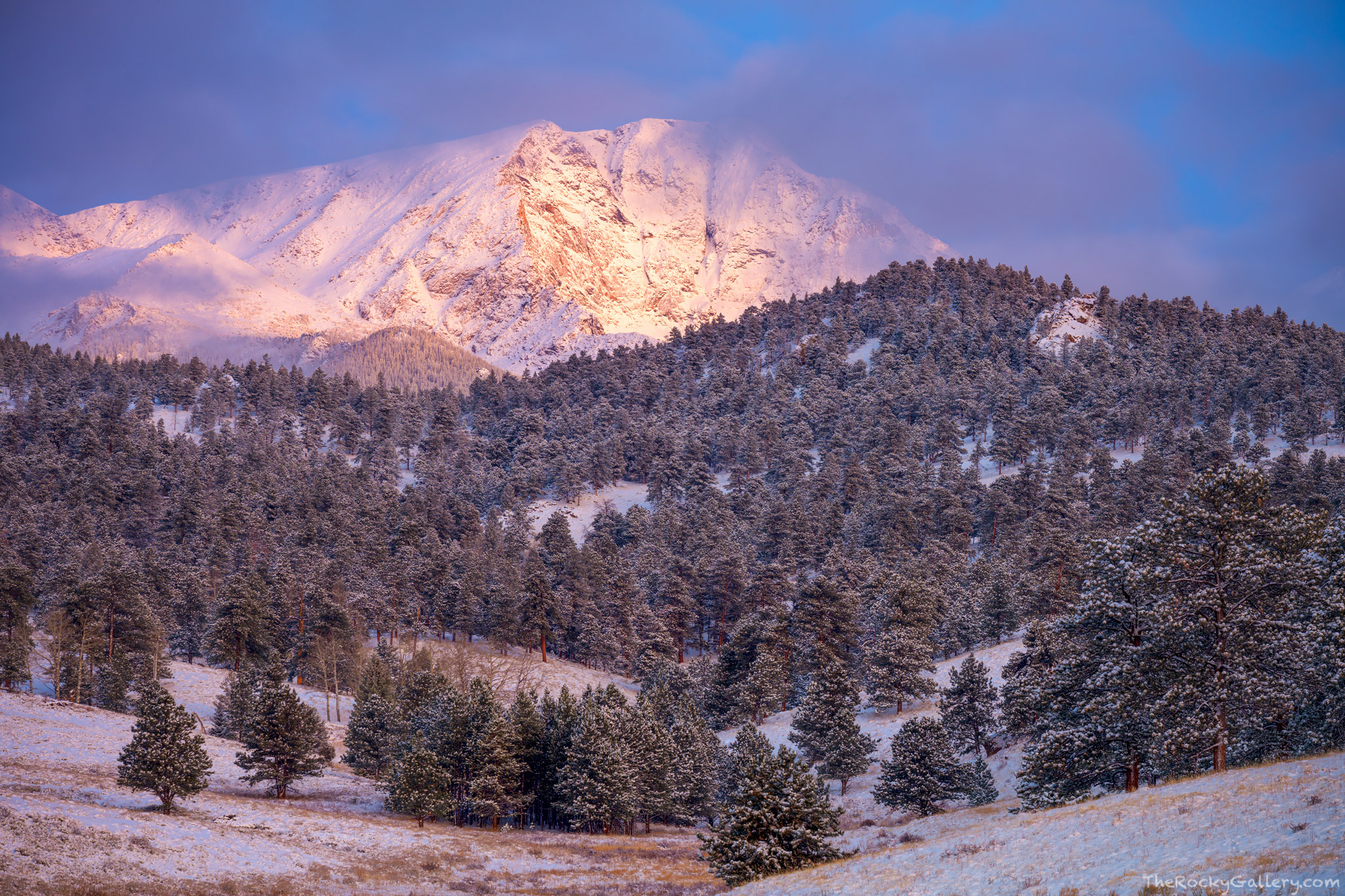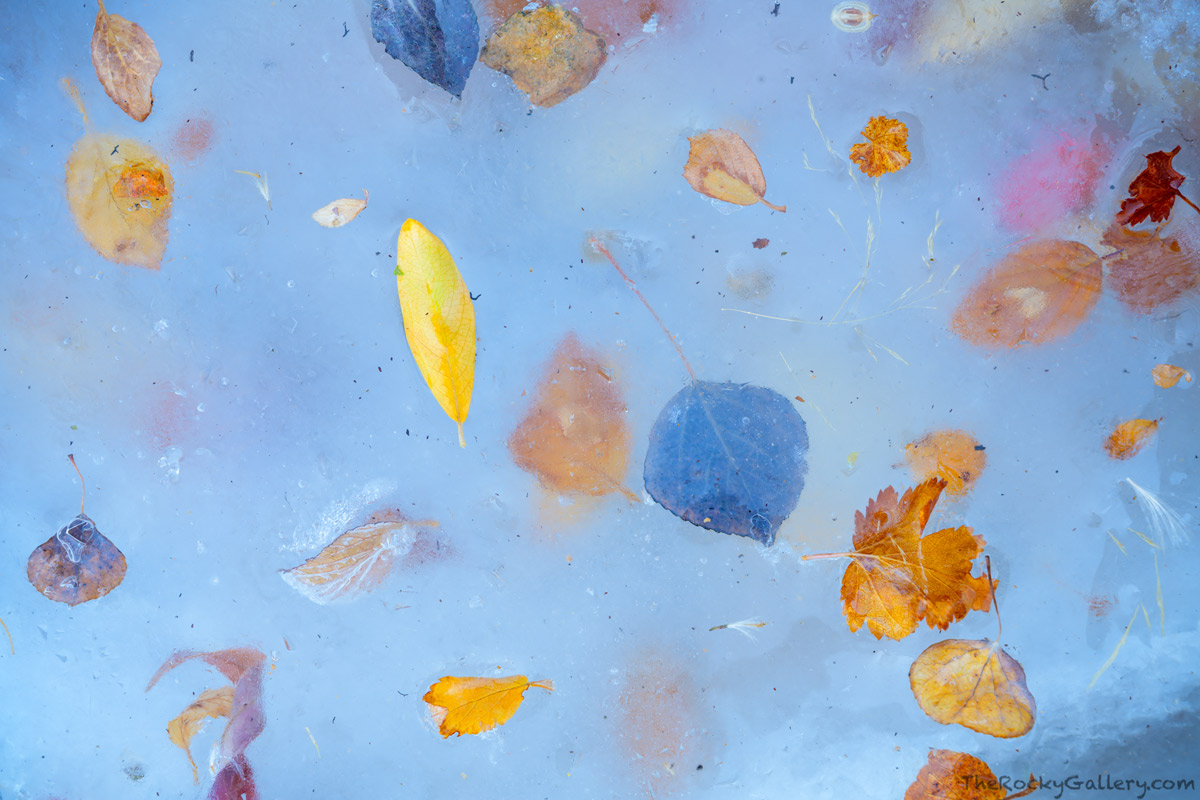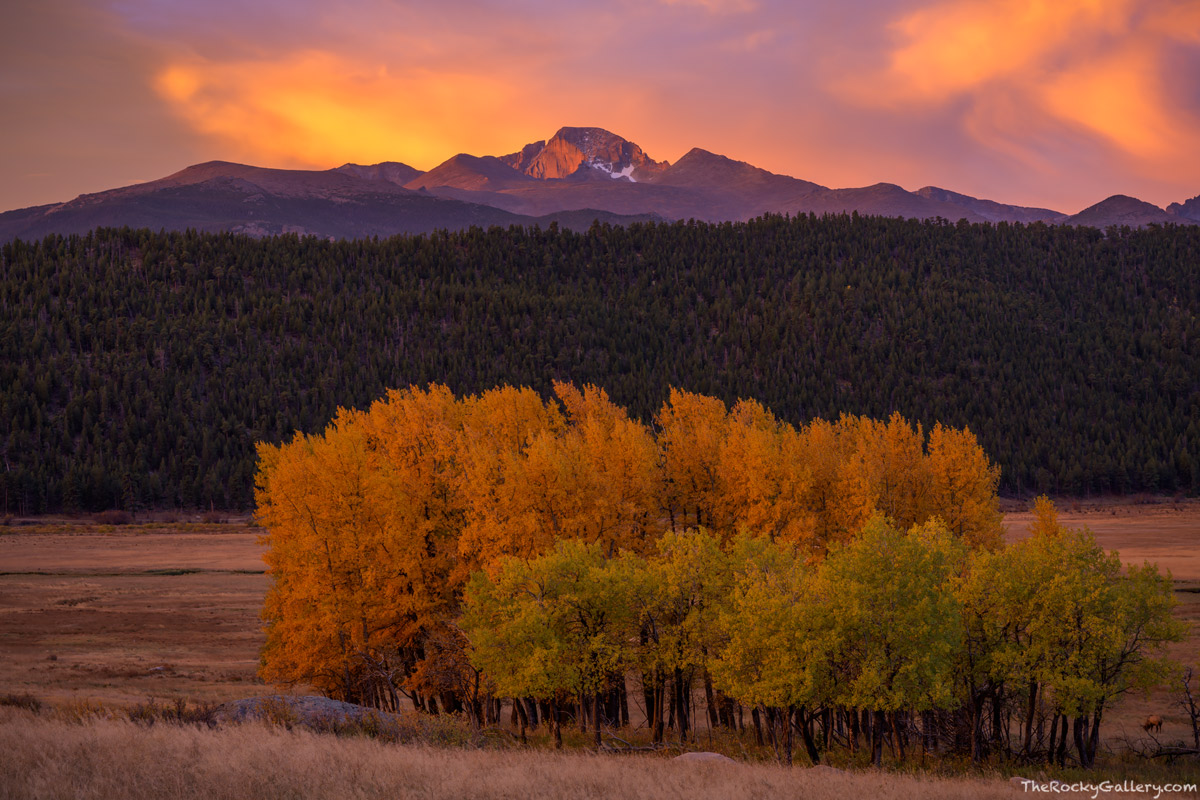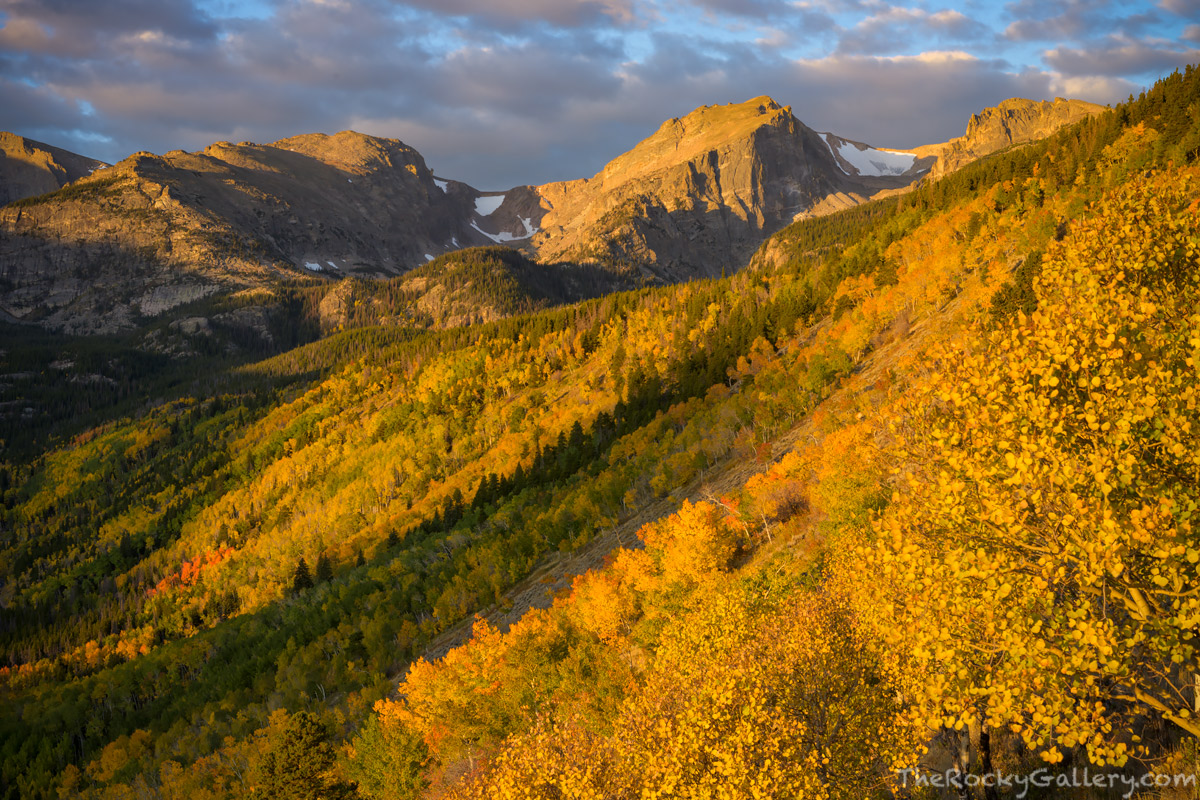
I hope everybody enjoyed their Thanksgiving holiday here in the States with their families. Maybe some of you were even able to get a few extra days off from work and sneak in some field time with the camera and create some new images.
This past week in Rocky Mountain National Park was a whirlwind with regards to the weather. Another great snowstorm dropped over 30 inches of fresh snow in and around Estes Park and RMNP by Wednesday morning. Even better is that the wind that so often wont cooperate after snows (more on that later), stayed calm as the front moved off to the east. Skies did not completely clear and we were left tons of fresh snow on the landscape, no wind and some beautiful cloud over the mountains on Wednesday morning.
In fact, conditions stayed fairly calm right through Thursday morning which allowed two decent sunrise shoots after a large helping of snow, much more of a rarity than many think here on the Front Range of Colorado.
That all changed again by Friday into Saturday as the jet stream moved right over the top of the northern Colorado. After a little more snow, those winds I spoke about earlier returned with a vengeance. Hurricane force winds descended over Rocky with nearly eighty mile and hour gusts recorded and ninety mile and hour gusts recorded just south of Estes Park in Nederland.
All our fresh snow quickly began to blow around and over the roads which the park service had done a great job keeping clear. Snow falling combined with fresh snow on the ground created ground blizzard like conditions in RMNP and by the middle of Saturday morning, the NPS had to close many of the roads in Rocky Mountain National Park on account of large snow drifts, high winds and some trees that had fallen over the roadways.
All in all, par for the course here on the east side of Rocky Mountain National Park as we head from November into December. That being said there was a nice window from Wednesday until Thursday for photographing beautiful winter landscapes on the east side of RMNP.
The remainder of this week looks a lot more calm then last weeks weather pattern, though the winds will remain and we may have some light snow by Thursday. As always with Rocky Mountain National Park in the winter, one needs to make quick work of any chances to shoot freshly fallen snow and keep an eye on the weather and hope for a little bit of good luck with the timing of the storms for conditions to come together like the image of Ypsilon Mountain and the Mummy Range at sunrise on Wednesday morning.

